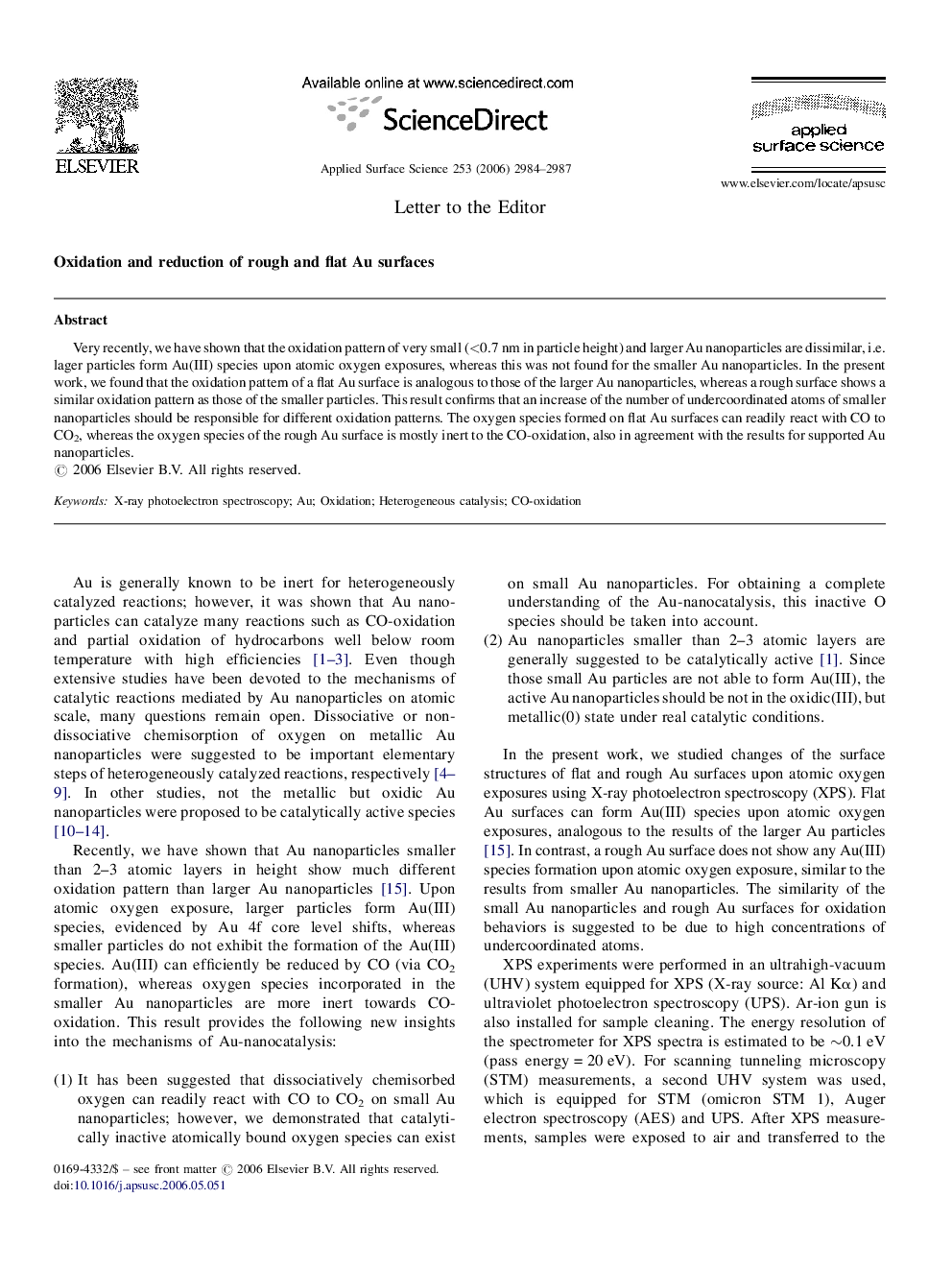| Article ID | Journal | Published Year | Pages | File Type |
|---|---|---|---|---|
| 5369995 | Applied Surface Science | 2006 | 4 Pages |
Very recently, we have shown that the oxidation pattern of very small (<0.7Â nm in particle height) and larger Au nanoparticles are dissimilar, i.e. lager particles form Au(III) species upon atomic oxygen exposures, whereas this was not found for the smaller Au nanoparticles. In the present work, we found that the oxidation pattern of a flat Au surface is analogous to those of the larger Au nanoparticles, whereas a rough surface shows a similar oxidation pattern as those of the smaller particles. This result confirms that an increase of the number of undercoordinated atoms of smaller nanoparticles should be responsible for different oxidation patterns. The oxygen species formed on flat Au surfaces can readily react with CO to CO2, whereas the oxygen species of the rough Au surface is mostly inert to the CO-oxidation, also in agreement with the results for supported Au nanoparticles.
